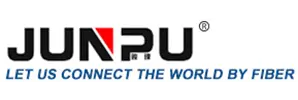
-
Home
-
Products
- Solution
- WHY JUNPU
- Services
- Resources
- News
- Contact Us

Indoor fiber optic cables are designed for use inside buildings. They are made with fire-resistant materials and have a plenum or riser rating to meet safety codes. These cables are typically used for high-speed data transmission, such as in local area networks (LANs), telecommunication rooms, and data centers.
Construction: Indoor fiber optic cables are typically constructed with a tight buffer or loose tube design, with a flame-retardant jacket. Outdoor fiber optic cables have additional layers of protection, such as a water-blocking gel or tape, armored shielding, and UV-resistant jackets.
Environmental Resistance: Indoor cables are not designed to withstand harsh weather conditions, moisture, or sunlight. Outdoor cables are specifically built to endure these factors and protect the fibers from damage.
Installation: Indoor fiber optic cable is installed in controlled environments like buildings or data centers, usually through conduit or cable trays. Outdoor cables are buried underground, installed aerially on poles, or run along walls and structures.
Fiber Type: Indoor cables often use multi-mode fibers for shorter transmission distances within buildings. Outdoor cables commonly utilize single-mode fibers for long-distance communication, as they have lower attenuation rates.
Safety Codes: Indoor cables need to meet specific fire safety ratings, such as plenum or riser ratings, to comply with building codes. Outdoor cables have different requirements for underground burial depths and must be resistant to moisture and UV radiation.
Cost: Outdoor fiber optic cable generally has a higher cost due to its additional layers of protection and rugged construction. Indoor cable is more cost-effective as it is not subjected to the same extreme environmental conditions.
Indoor fiber optic cables require minimal maintenance, but proper handling is crucial to prevent damage to the cables and connectors. They should be protected from excessive bending, crushing, or exposure to harsh chemicals.
Indoor fiber optic cables are commonly used in various applications such as local area networks (LANs), data centers, telecommunications rooms, security systems, and multimedia installations.
Common connectors used with indoor fiber optic cables include LC, SC, ST, and MTP/MPO connectors. The choice of connector depends on the specific requirements of the application.
Yes, indoor fiber optic cables are compatible with various network devices such as switches, routers, servers, and media converters. They support high-speed data transmission and can be used with different network protocols.
Indoor fiber optic cables can be installed using different methods, including surface-mounted trunking, conduit systems, or plenum spaces. The installation method depends on building regulations, fire safety codes, and the specific requirements of the network.
 Call us on:
Call us on:  Email Us:
Email Us:  Wanhua Science and Technology Park, No. 528, Shunfeng Road, Donghu Street, Linping District, Hangzhou City, Zhejiang Province
Wanhua Science and Technology Park, No. 528, Shunfeng Road, Donghu Street, Linping District, Hangzhou City, Zhejiang Province